The battle for the Seelow Heights. How the Red Army broke through to Berlin
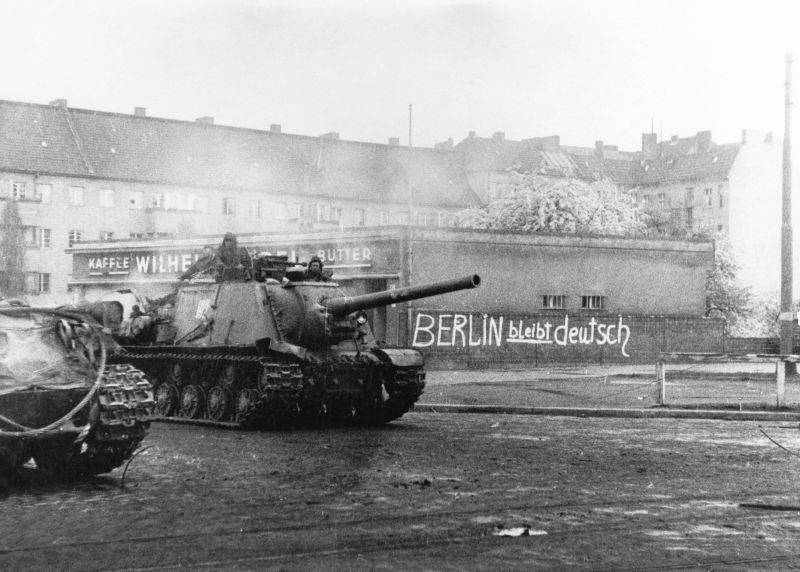
The Agony of the Third Reich. 75 years ago, on April 18, 1945, the Red Army took the Zeelov Heights. Having completed the breakthrough of the Oder frontier of the Wehrmacht defense, on April 20, the troops of the 1st Belorussian Front reached the approaches to Berlin.
"Berlin will remain German"
On April 15, 1945, Adolf Hitler appealed to the soldiers, urging them to a merciless struggle and assuring that "Berlin will remain German." He demanded to shoot on the spot all those who give the order to retreat or leave their positions. In the frontline areas, military courts operated, the effect of which was extended to the civilian population. Field Marshal Keitel and Bormann ordered the defense of every city to the last man; surrender was punishable by death. Propaganda also called for fighting to the last man. The Russian soldiers were portrayed as terrible monsters that exterminate all Germans indiscriminately. This forced millions of people to leave their homes, many old people, women and children died of hunger and cold.
German troops created a powerful defense in the way of the Soviet armies. Before the 1st BF, under the leadership of Zhukov, there were about 26 German divisions (settlement) in the section from Schwedt to Gross-Gastrose. Plus the garrison of Berlin. In total, in the offensive zone of the 1st BF there were over 500 thousand soldiers and officers, more than 6 thousand guns and mortars, 800 tanks and self-propelled guns. In the offensive zone of the 2nd BF under the command of Rokossovsky from Berg-Divenov to Schwedt, the Germans had 13,5 settlement divisions. A total of about 100 thousand fighters, 1800 guns and mortars, about 130 tanks. In the offensive zone of the 1st UV under the command of Konev from Gross-Gastrose to Krnov, the Nazis had over 24 divisions. A total of 360 thousand people, 3600 guns and mortars, 540 tanks.
Behind the rear, the army group Wisla and Center from the previously defeated divisions formed reserves. Steiner’s army group (2 divisions) was located north of Berlin, and the Moser corps group (3 divisions) in the Dresden area was located south of Berlin. A total of 20 reserve divisions were located in the Berlin direction, 30-16 km from the front. In addition to personnel divisions, the German command mobilized everything possible, special, educational and spare parts, schools and schools, etc. Militia battalions, tank destroyers, and Hitler Youth units were formed.
The Germans had a powerful defense along the western bank of the Oder and Neisse. Three defense zones were up to 20-40 km deep. Between them there were reserve lines. Settlements in the Berlin direction were turned into strongholds and defense centers, and cities into “fortresses”. The most saturated with various engineering structures was the section between Kustrin and Berlin (here the Russians were closest to the German capital). Large resistance nodes were Stettin, Frankfurt, Guben, Gartz, Cottbus and others. The total depth of defense, including the Berlin fortified area, reached 100 km. The German capital itself was protected by three rings of defense: external, internal and urban. The city was divided into eight defense sectors, they were connected by the 9th - central (Reichstag, Imperial Chancellery and other large buildings). Bridges over the Spree and canals were prepared for destruction. The defense of Berlin was led by General Reiman. Goebbels was the imperial commissar of defense of the capital. The overall defense of Berlin was provided by Hitler himself and his entourage: Goebbels, Bormann, Chief of the General Staff Krebs, General Burgdorf and State Secretary Nauman.
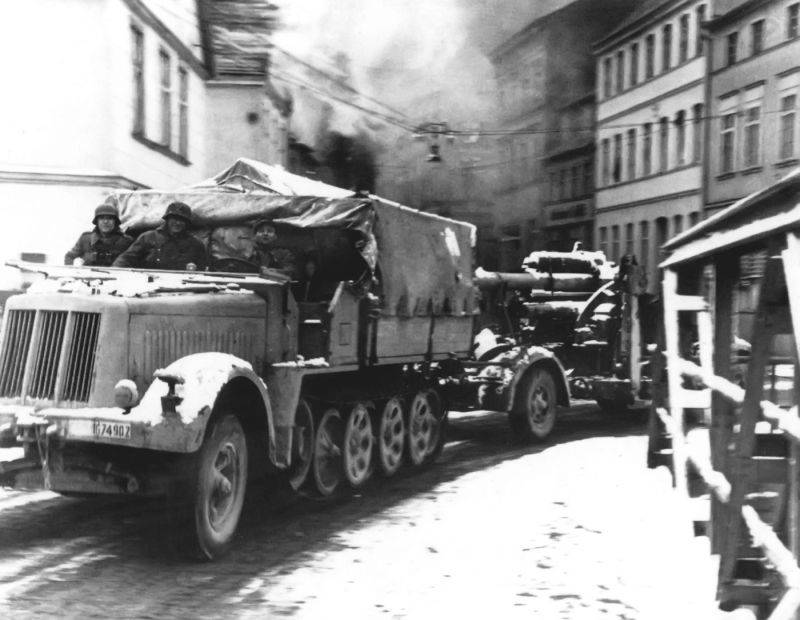
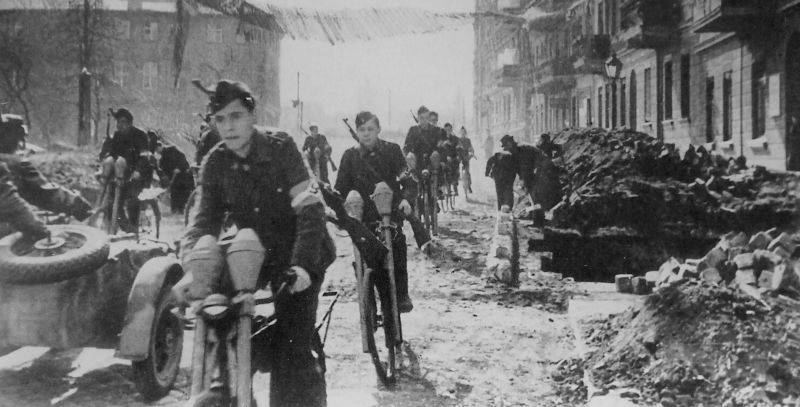
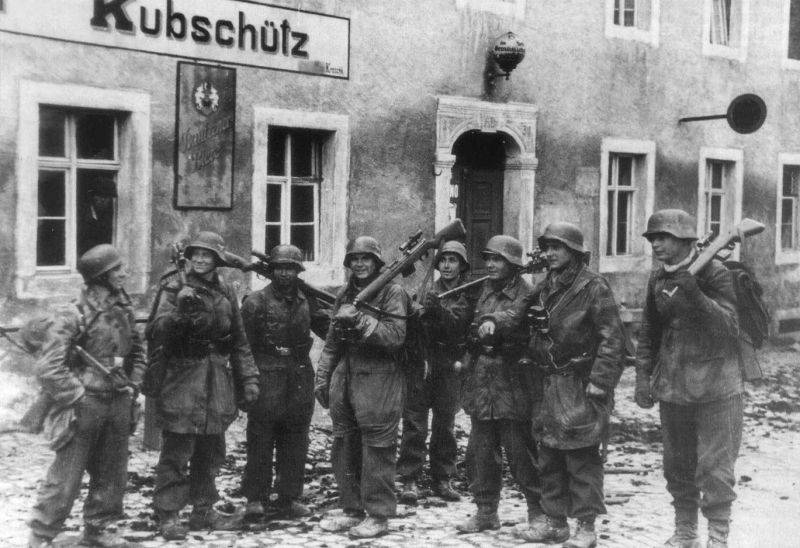
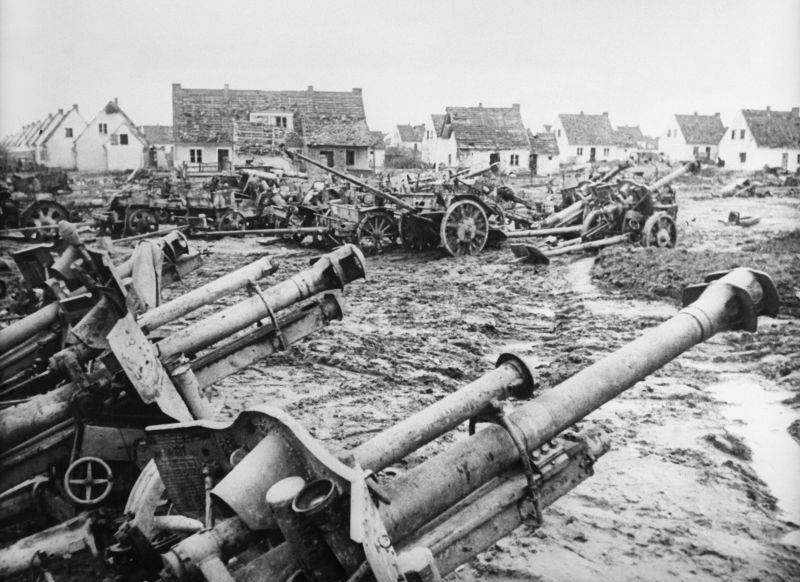
Soviet forces
The 1st BF had three groupings of troops, which were to break into the enemy defenses on the outskirts of the German capital, take Berlin and go to Elba on the 12-15th day of the operation. The main blow in the central section was inflicted from the Kyustrinsky bridgehead by the 47th Army of General Perkhorovich, the 3rd Attack Army of Kuznetsov, the 5th Attack Army of Berzarin, the 8th Guards Army of Chuikov, the 2nd and 1st Guards Tank Armies of Bogdanov and Katukov . On the right flank, north of Kustrin, the Belov 61st Army and the 1st Army of the Polish General Poplavsky’s Army attacked. On the left flank, south of Kyustrin, the 69th and 33rd armies of Kolpakchi and Tsvetaev advanced.
Konev’s armies were to break open the enemy’s defenses in the Kotbuz direction, destroy German troops in the area south of Berlin, and reach the Belits – Wittenberg – Dresden line on the 10–12th day of the offensive. The main strike force of the 1st UV was aimed at the area south of Berlin. It included: the 3rd Guards Army of Gordov, the 13th Army of Pukhov, the 28th Army of Luchinsky, the 5th Guards Army of Zhadov, the 3rd and 4th Guards Tank Armies of Rybalko and Lelyushenko. An auxiliary blow in the Dresden direction was dealt by the 2nd Army of the Polish General Sverchevsky and the 52nd Army of Koroteev.
The 2nd BF under the command of Rokossovsky received the task of crossing the Oder, taking Stettin, and liberating the territory of Western Pomerania. The Soviet armies were to cut off the 3rd Panzer Army from the remaining forces of the Wisla Army Group and destroy the Nazis in the coastal areas of the Baltic Sea. Ensure the capture of Berlin from the northern flank. The main strike force of the front carried a strike in the direction of Demmin, Rostock, Furstenberg - Wittenberg. It included the 65th Batov Army, the 70th Popov Army, the 49th Grishin Army, the 1st, 3rd and 8th Guards Tank Corps of Panov, Panfilov and Popov, the 8th Firsovich Mechanized Corps and the 3rd The 2st Guards Cavalry Corps of Oslikovsky. On the northern flank of the front, the XNUMXnd strike of Fedyuninsky attacked. On the coastal flank, the actions of the front were supported by the Baltic Fleet.
The offensive of the ground forces supported large forces aviation: 4th Vershinin Air Army, Rudenko 16th Air Army, Krasovsky 2nd Air Army, Golovanov 18th Army, Baltic Fleet aviation.
German defense breakthrough by Zhukov’s armies
On April 16, 1945, the troops of Zhukov and Konev launched an assault on enemy positions. Preliminary, a powerful artillery and aviation training was carried out. She was effective. The Soviet infantry and tanks of the place wedged into the enemy’s defenses for 1,5–2 km, not meeting strong resistance from the Nazis. From 30 to 70% of the advanced German forces were disabled by Soviet artillery fire and air strikes.
Zhukov’s army on the first day of the operation broke through the main line of defense of the German army. However, at the Zeelovsky heights, where the second line of defense of the enemy passed, our troops were detained. There were well-fortified heights, the Nazis had a strong system of artillery and machine-gun fire. The approaches to the heights were covered by mines, wire and other obstacles, and an anti-tank ditch. The retreating German units were reinforced from the reserve by fresh divisions, armored vehicles and artillery.
To avoid delay, Marshal Zhukov threw the tank armies of Katukov and Bogdanov into battle. But the Nazis fiercely resisted. The command of the 9th German army threw two motorized divisions into the counterattack - the 25th and the Kurmark panzergrenadier division. The Germans fought fiercely, hoping to stop the Russians at the line of the Zeelow Heights. This line was considered a "castle to Berlin." Therefore, the fighting on April 17 took on the most stubborn character.
As a result, the pace of the advance of the 1st BF was lower than planned, but in general, the Soviet armies fulfilled the task and made their way forward. The soldiers and commanders knew that the main goal ahead was Berlin. The victory was near. Therefore, Soviet soldiers gnawed at the enemy defenses. The Seelow Heights took by the morning of April 18. Zhukov’s armies broke through the enemy’s second defensive line and two intermediate positions in the rear of the German army. The front command ordered the 3rd, 5th Shock and 2nd Guards Tank Armies to make their way to the northeastern outskirts of Berlin, the 47th Army and the 9th Tank Corps of Kirichenko to cover the German capital from the north and north-west. The forces of the 8th Guards and 1st Guards Tank Army continued to break through to Berlin from the east.
On April 18, the German High Command demanded the transfer of all available reserves in the Berlin area, including the garrison, to strengthen the 9th Busse Army. On this day, the Nazis still fiercely tried to detain the Russians on the approaches to Berlin. On April 19, stubborn battles fought for Munich, which covered the German capital from the east. Having taken the city, our troops launched an assault on the third line of enemy defense. Broken German units began to retreat to the outer contour of the Berlin defensive area. On April 20, Russian troops broke through the third line of defense of the Nazis and rushed to Berlin. On this day, long-range artillery of the 79th Rifle Corps of the 3rd Shock Army of Kuznetsov opened fire on the capital of Germany. On the same day, artillery of the 47th army of Perhorovich was opened fire on Berlin.
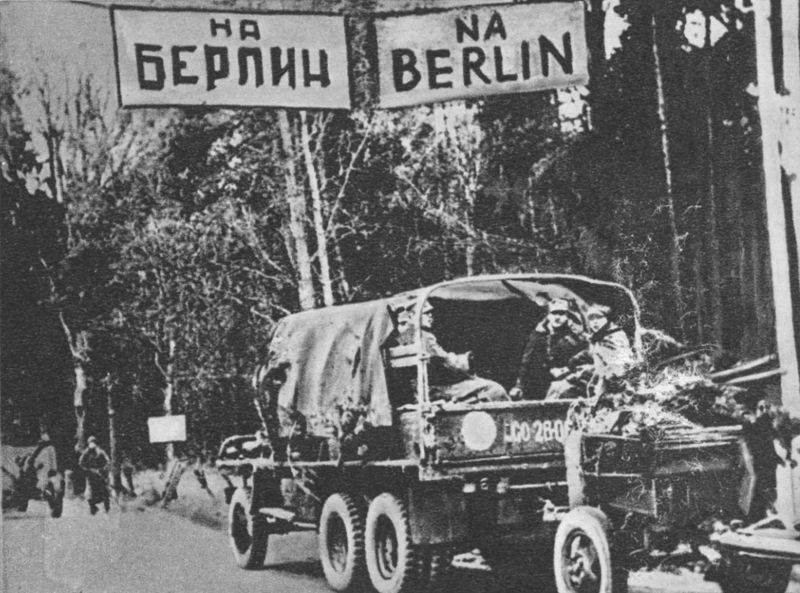
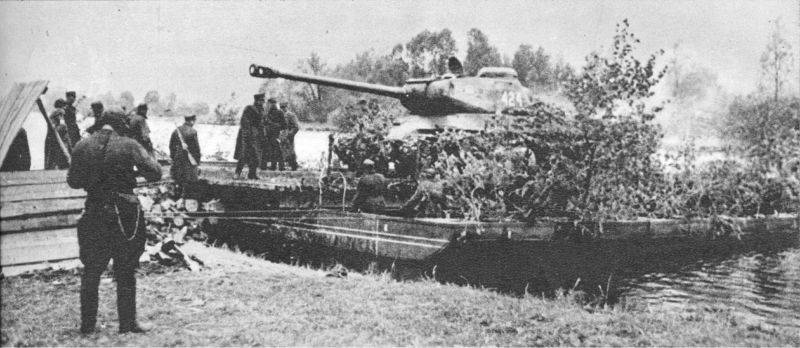
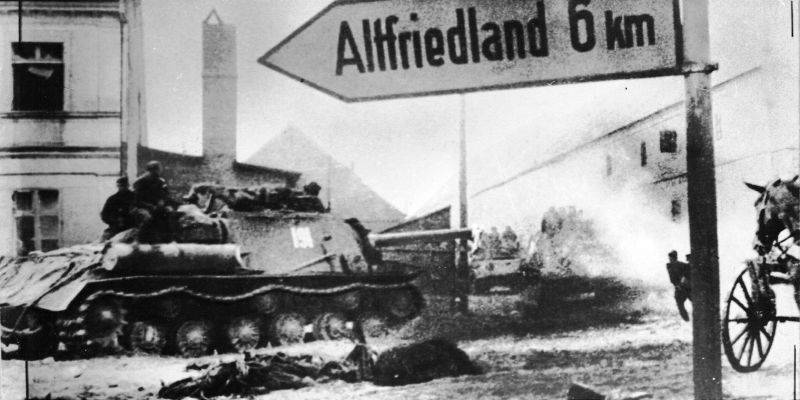
The beginning of the assault on the German capital
On April 21, the advanced units of the 1st BF front broke into the northern and northeastern outskirts of Berlin. The front command decided that not only combined arms armies, but also tank armies would go to storm the city. At the same time, the 61st Army and the 1st Polish Army successfully advanced towards the Elbe River.
On April 22, Hitler held the last military conference. The Führer decided to stay in the capital and personally lead the fight. He ordered Keitel and Jodl to fly south and from there lead the troops. Hitler also ordered that all remaining troops be withdrawn from the Western Front and thrown into the battle for Berlin. The 12th Army of Wenck, which held the defenses on the Elbe and Mulda, was given the task of turning east, joining the 9th Army, to the southern suburbs of Berlin. The 9th Army was ordered to break through to Berlin from the southeast. Also, from the north of the capital, it was planned to attack the right wing of the 1st BF with a group of three divisions (the 4th motorized SS division “Police”, the 7th tank and the 25th motorized). On April 23, Keitel went to the Western Front at the headquarters of the 12th Army and discussed with Wenck a plan to advance the army to Berlin in the Potsdam area.
On April 23, parts of the armies of Perkhorovich, Kuznetsov and Berzarin broke through the Berlin city contour and began to advance into the central part of Berlin from the west, north and northeast. In overcoming the Spree, an important role was played by the ships of the Dnieper flotilla Rear Admiral Grigoriev. The 8th Guards Army Chuikova entered the Adlershof area, Bonsdorf, attacked the southeastern part of the German capital. The shock group of the left flank of the front (3rd, 69th and 33rd armies) attacked southwest and south, blocking the Frankfurt-Guben group of the enemy (part of the forces of the 9th and 4th tank armies).
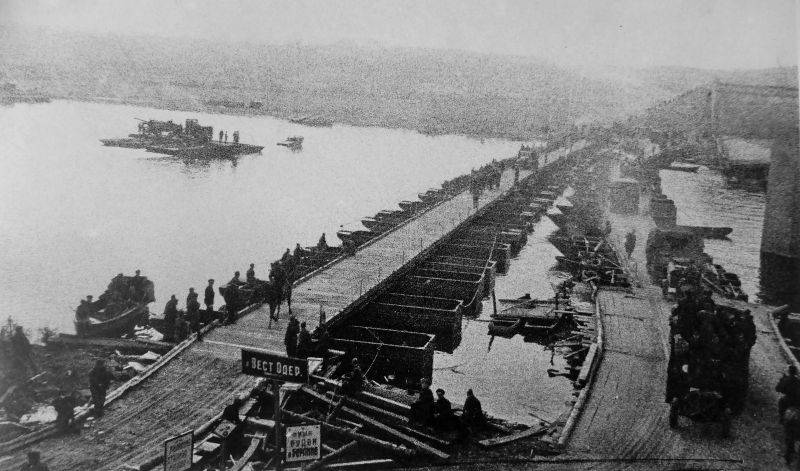
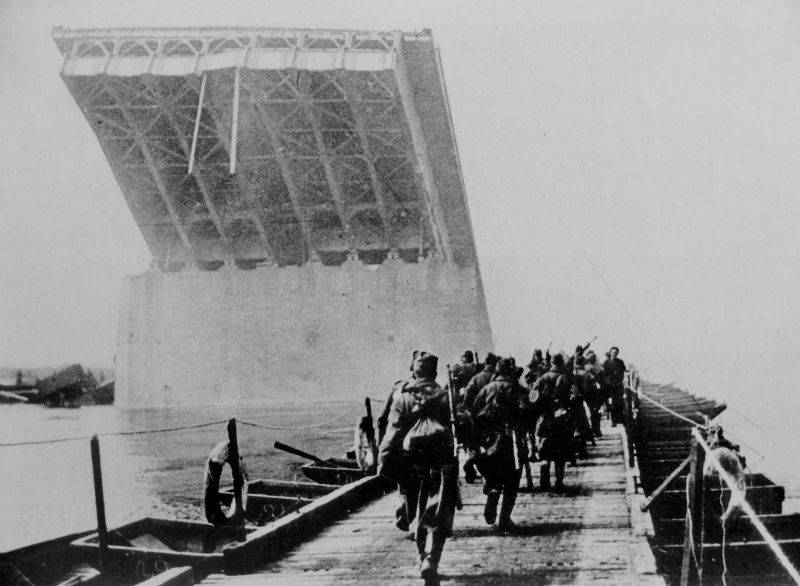
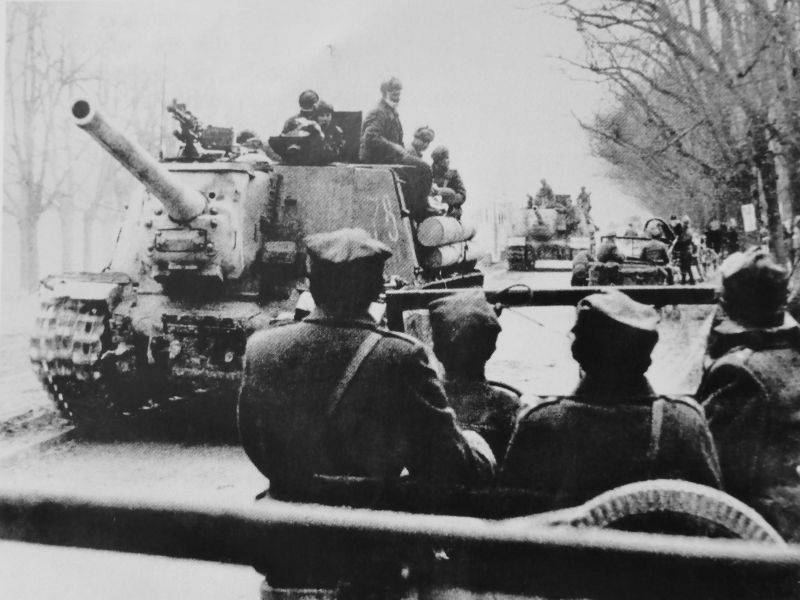
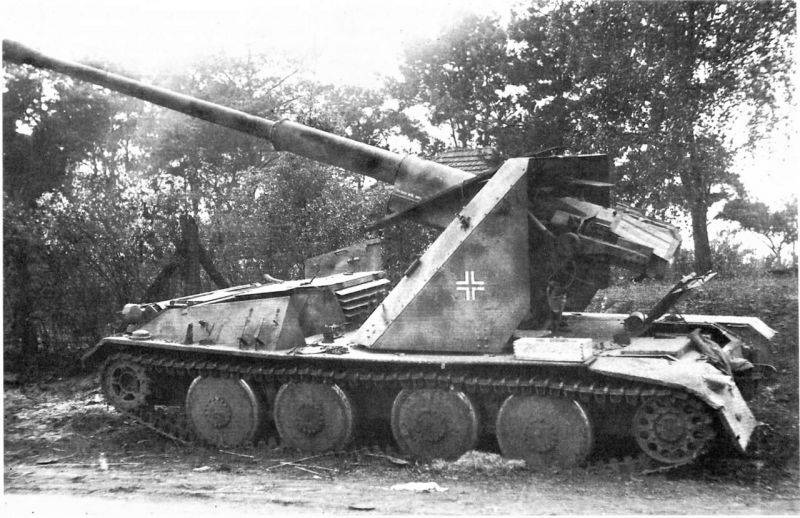
The offensive of Konev’s troops
Konev’s armies successfully broke through the enemy’s defenses on the Neisse River and on April 17 reached the third line of German defense on the Spree River. To hasten the fall of Berlin, the Soviet Headquarters ordered Konev to turn their tank armies north to break through to the German capital from the south. The Soviet high command decided to use the fact that the Germans did not have such powerful forces against the 1st UV as they did in the Kyustrinsky direction. As a result, Konev’s main forces, breaking through the enemy’s defense from east to west, turned sharply north. There were no new enemy defensive lines in front of the Soviet mobile formations, and those that existed were located front to the east, and our troops calmly passed north past them and between them.
On April 18, the armies of Rybalko and Lelyushenko crossed the Spree and began to move towards Berlin. The 3rd Guards Army of Gordov was advancing west and northwest, reflecting the counterattacks of the enemy group from the Kotlas area. The 13th army of Pukhov, having provided an entry into the gap of mobile units, developed an offensive to the north-west. But large enemy forces hung over the flanks of the army in the areas of Kotlas and Spremberg. On April 19, the 5th Guards Army of Zhadov and the left flank of the 13th Army blocked the Spremberg group of the enemy. Thus, Soviet troops surrounded and began the destruction of strong enemy groups in the areas of Kotlas and Spremberg.
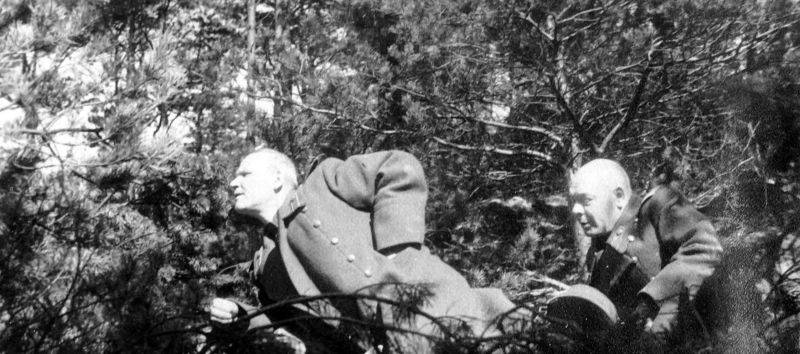
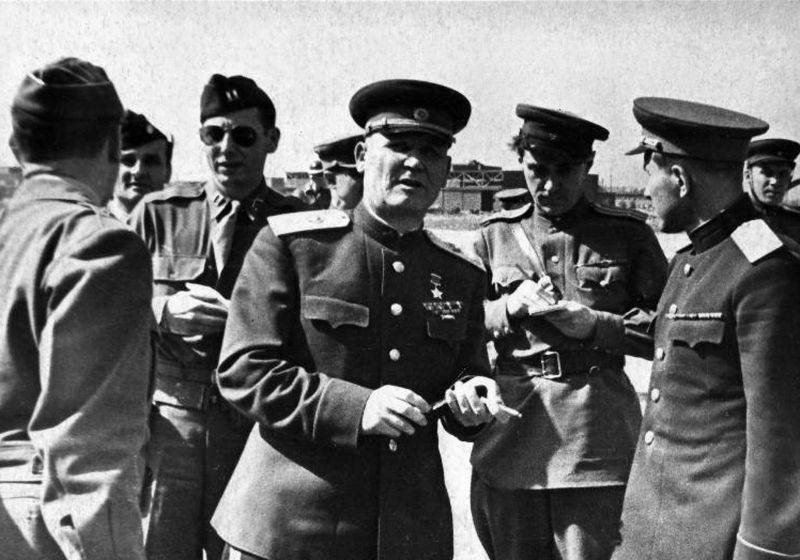
On April 20, Soviet tanks broke through to the Zossensky defensive area (here was the headquarters of the General Staff of the German ground forces) and the next day occupied it. On April 21, the guardsmen Lelyushenko and Rybalko made their way to the southern part of the Berlin fortified area. Our troops fought hard battles with the Nazis in the area of Luckenwalde and Uterboga. On this day, the 28th army of Luchinsky was introduced into the battle from the second echelon.
On the night of April 22, units of Rybalko’s army crossed the Notte Canal and, on the Mittenwalde and Zossen sections, broke through an external defensive contour. Going to the Telt Canal, Rybalko guards, supported by the 28th Army infantry, artillery and front aviation, broke through to the southern outskirts of the German capital. Advancing to the left of the 4th Guards Tank Army Lelyushenko captured Uterbog, Luckenwalde and attacked Potsdam and Brandenburg. In the area of Luckenwald, our tankers occupied a concentration camp, where more than 15 thousand prisoners were released (over 3 thousand were Russian). On the same day, units of the 3rd Guards Army of Gordov completed the destruction of the enemy Cottbus grouping and took Cottbus. Then the troops of Gordov began to move to the northeast.
On April 24, the main forces of the 3rd Guards Army crossed the Telt Canal and fought on the Lichterfelde, Celendorf line. By the end of the day, Soviet troops broke through the internal defensive contour, which covered the capital of Germany from the south. The 4th Guards Tank Army took the southern part of Potsdam. On the same day, units of the 1st UV united south-east of Berlin in the Bonsdorf, Bukkov and Britz regions with the troops of the left flank of the 1st BF strike group. As a result, the Frankfurt-Guben group was completely separated from the main forces of the 9th German army.
On the left flank of the 1st UV, the Germans still launched strong counterattacks. On April 19, in the Dresden direction, the Nazis attacked from the Görlitz-Bautzen area. Fierce battles raged for several days. Well-stocked reserves of elite German divisions hit the Soviet troops that came without blood support and were exhausted in previous battles. Here was formed the last "cauldron" of the Great Patriotic War, in which Soviet troops fell. In stubborn battles for the cities of Weissenberg and Bautzen and during the withdrawal from the encirclement, most of the personnel and equipment of the 7th Guards Mechanized Corps and the 294th Rifle Division were lost. The Germans were able to break through the defenses of the 52nd Army and went to the rear of the 2nd Polish Army. The Nazis advanced towards Spremberg for more than 30 km, but were then stopped.
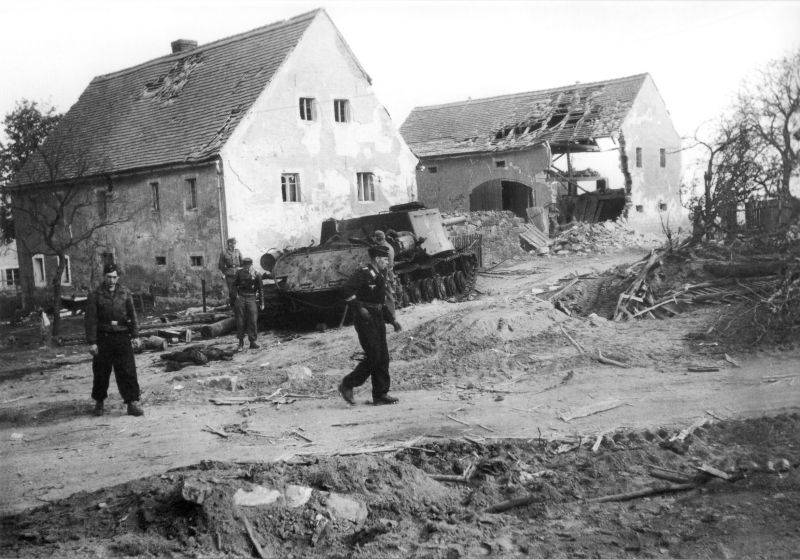
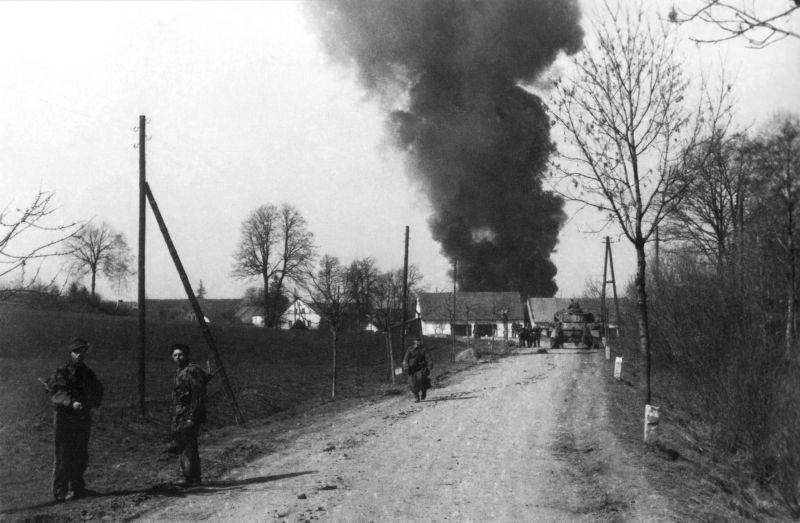
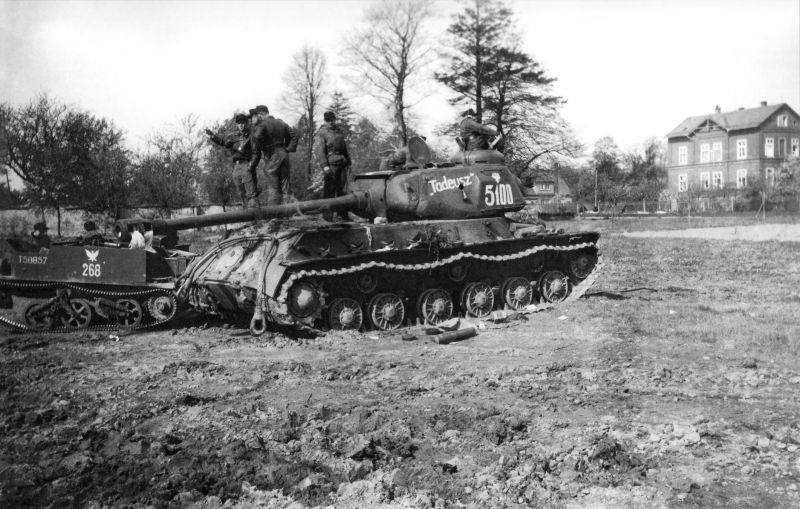
The offensive of the Rokossovsky troops
The 2nd BF went on the offensive on April 18, 1945. In difficult conditions, Soviet troops overcame the eastern arm of the Oder (Ost-Oder), walked along the dams with a water-flooded lowland and forced the western arm (West-Oder). Hacking the German defense on the west bank, our troops began to make their way west. In stubborn battles, the troops of Rokossovsky tied the German 3rd Panzer Army.
Attempts by the Nazis to help the capital from the northern flank and strike at the right flank of the 1st BF were thwarted by the vigorous actions of the Rokossovsky armies. “Our attack did not allow the enemy to transfer reserves to Berlin and thereby contributed to the success of the neighbor,” said Marshal K.K. Rokossovsky.
To be continued ...
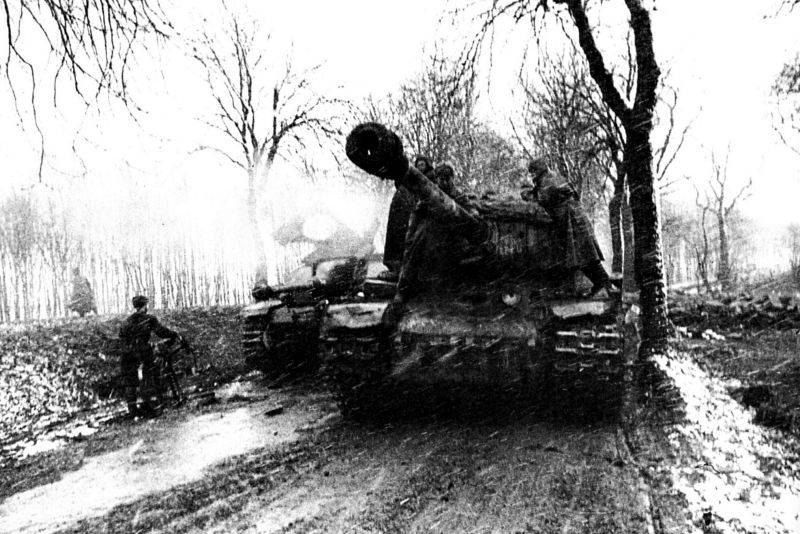
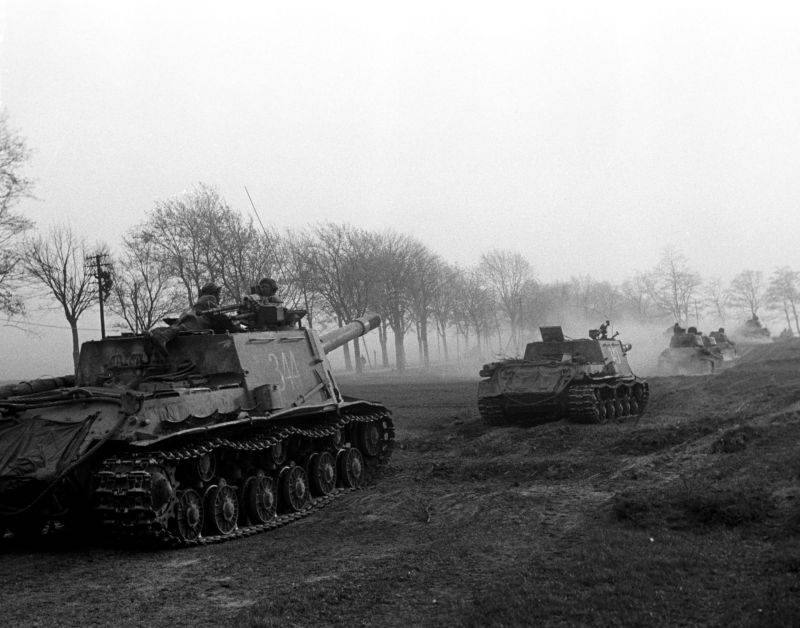
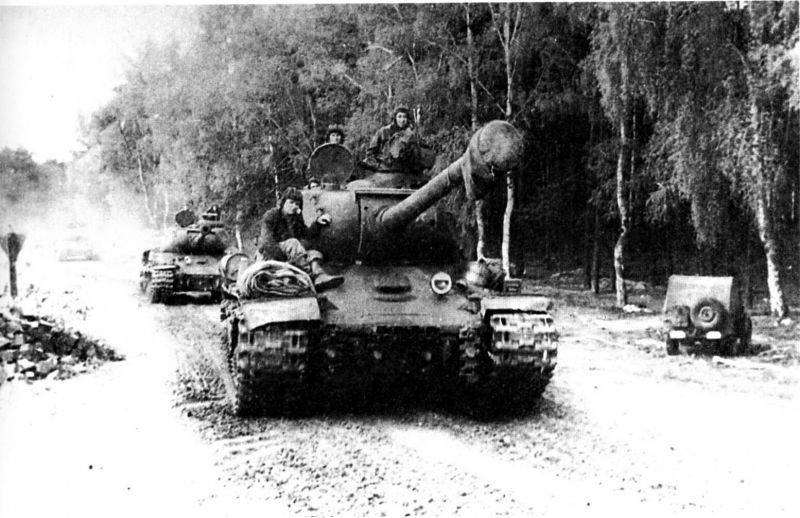
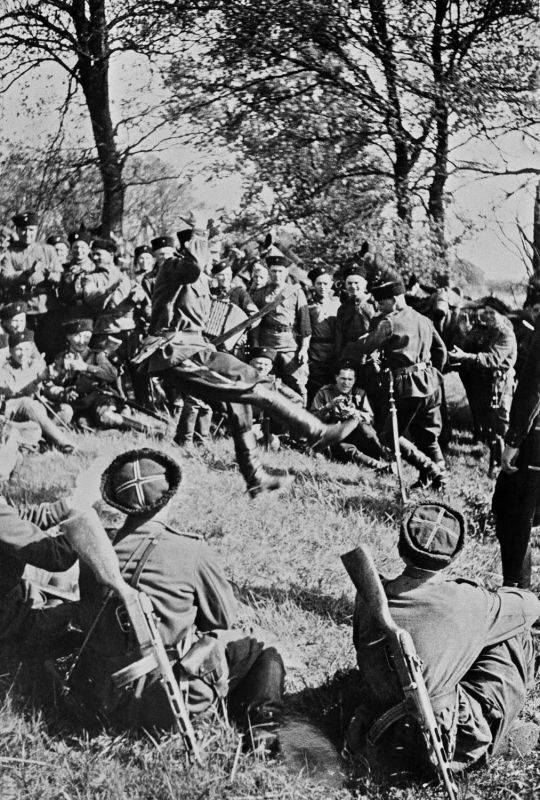
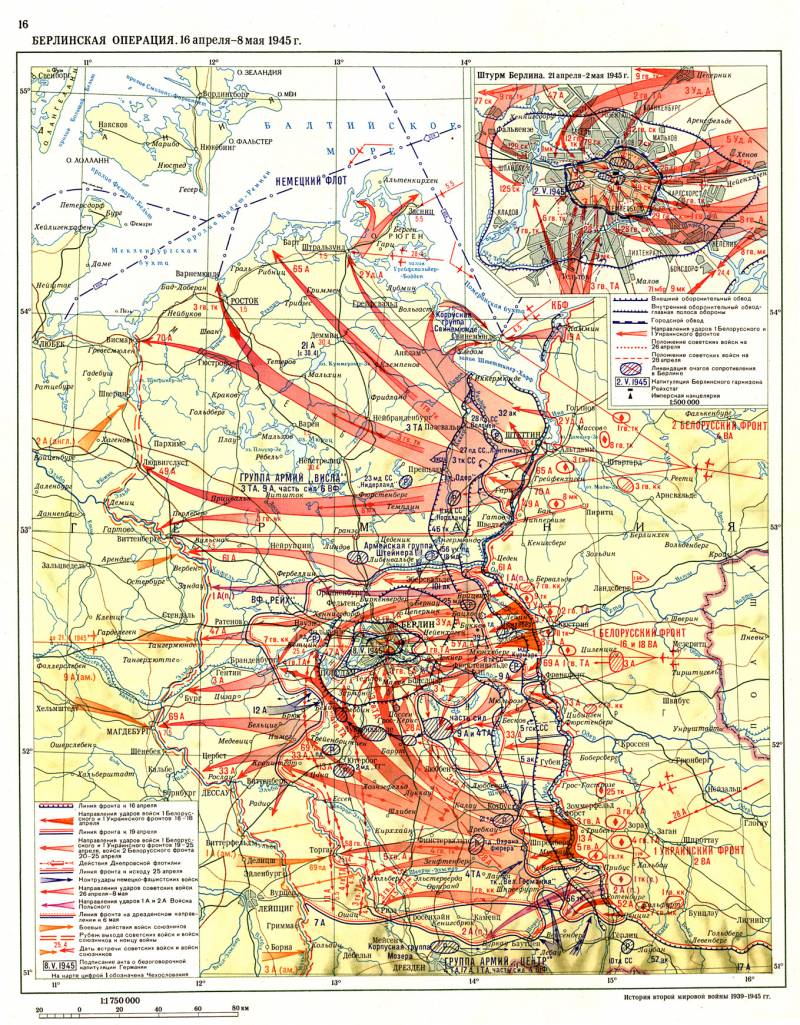
Information